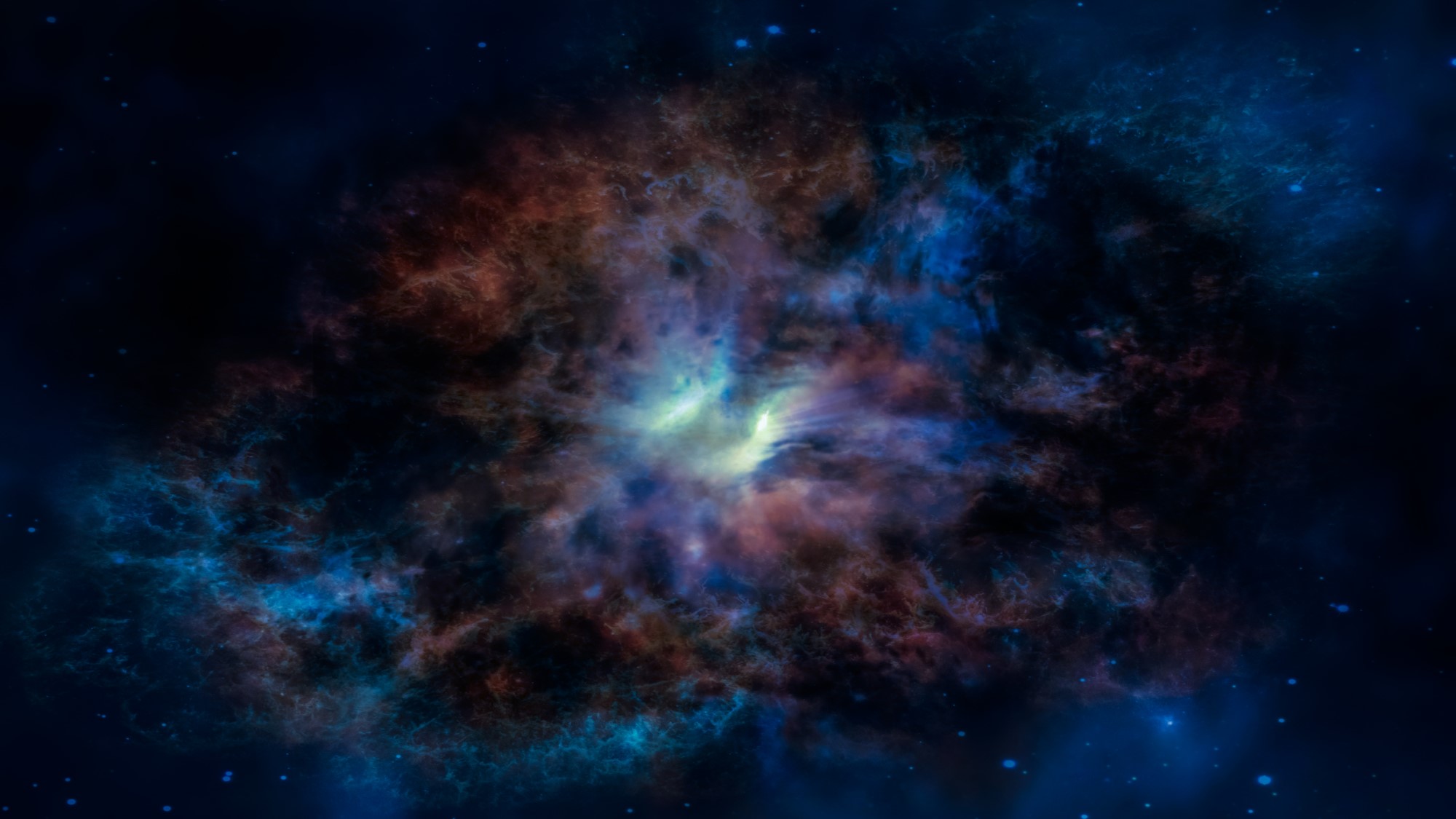Dark matter and dark energy are two mysterious and elusive components of the universe that are believed to make up a significant portion of its total mass-energy content.
Dark Matter:
Dark matter is a hypothetical form of matter that is thought to make up approximately 27% of the total mass-energy content of the universe. It is called "dark" because it does not emit, absorb, or reflect light or any other form of electromagnetic radiation, and it cannot be directly observed using telescopes or other instruments. However, its presence is inferred from its gravitational effects on visible matter, such as stars and galaxies.
The properties of dark matter are not well understood, but it is believed to be composed of particles that interact only weakly with other forms of matter and radiation. The most widely accepted theory is that dark matter is made up of a new type of particle called a WIMP (Weakly Interacting Massive Particle), which is heavier than a proton but lighter than an atom. Other possible candidates for dark matter particles include sterile neutrinos, axions, and dark photons.
Dark Energy:
Dark energy is another mysterious component of the universe that is believed to make up approximately 68% of the total mass-energy content of the universe. It is called "dark" because it is also invisible and does not interact with other forms of matter and radiation. Unlike dark matter, which exerts a gravitational force that attracts visible matter, dark energy is believed to have a repulsive effect on matter, causing the expansion of the universe to accelerate.
The properties of dark energy are even less understood than those of dark matter. The most widely accepted theory is that dark energy is associated with the vacuum of space itself and is a manifestation of the so-called cosmological constant, a term that Einstein introduced into his theory of general relativity to account for the observed static nature of the universe. However, the observed acceleration of the universe's expansion suggests that the cosmological constant value may be too small to explain the phenomenon, and other theories have been proposed, such as quintessence or modified gravity.
Both dark matter and dark energy play a crucial role in the structure and evolution of the universe. Dark matter is responsible for the formation and stability of galaxies and galaxy clusters, while dark energy is driving the expansion of the universe, causing it to grow at an ever-increasing rate. Without dark matter and dark energy, the universe as we know it would not exist.

